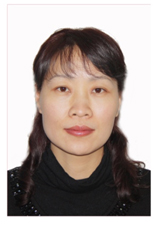Research Progress on Application of Chemometrics in Identification of Accelerants

摘 要
化学计量学已广泛应用于法庭科学领域的数据处理和分析,尤其是物证的物理和化学检验。为了解其在助燃剂检验鉴定领域应用的研究进展,将近年来比较有代表性的国内外相关研究进行了综述,分别总结了化学计量学在助燃剂检验鉴定中定性、分类及物证证据效力评价方面的应用,包括助燃剂检验鉴定中干扰的排除、助燃剂种类的区分以及似然比的计算等,并对其应用前景进行了展望(引用文献49篇)。
 助燃剂
助燃剂  物证鉴定
物证鉴定  火灾调查
火灾调查  法庭科学
法庭科学  chemometrics
chemometrics  accelerant
accelerant  evidence identification
evidence identification  fire investigation
fire investigation  forensic science
forensic science 
Abstract
Chemometrics have been widely applied for data processing and analysis in the field of forensic science, especially for the physical and chemical examination of physical evidence. To understand the research progress of its application in the identification of accelerant, the representative relevant domestic and foreign research in recent years was reviewed. The application of chemometrics in the evaluation of qualitative, classification, and physical evidence validity in the identification of accelerants were summarized, including the elimination of interference, the differentiation of brands and categories of accelerants, and the calculation of likelihood ratios in the identification of accelerants, and its application prospect was prospected (49 ref. cited).
中图分类号 O65 DOI 10.11973/lhjy-hx202306021
所属栏目 综述
基金项目 公安部技术研究计划(No.2020JSYJC24)
收稿日期 2022/1/17
修改稿日期
网络出版日期
作者单位点击查看
备注李秋璠梓,硕士研究生,研究方向为火场助燃剂检测鉴定
引用该论文: LI-QIU Fanzi,JIN Jing,QIAN Peiwen,YIN Guo,LIU Ling,DENG Liang. Research Progress on Application of Chemometrics in Identification of Accelerants[J]. Physical Testing and Chemical Analysis part B:Chemical Analysis, 2023, 59(6): 738~744
李秋璠梓,金静,钱佩雯,殷果,刘玲,邓亮. 化学计量学应用在助燃剂检验鉴定中的研究进展[J]. 理化检验-化学分册, 2023, 59(6): 738~744
共有人对该论文发表了看法,其中:
人认为该论文很差
人认为该论文较差
人认为该论文一般
人认为该论文较好
人认为该论文很好






参考文献
【1】OTTO M. Chemometrics: Statistics and computer application in analytical chemistry[M]. Weinheim: Wiley, 2016.
【2】COUNCIL N R. Strengthening forensic science in the United States: A path forward[M]. Washington D.C.: National Academies Press, 2009.
【3】MARTÍN-ALBERCA C, ORTEGA-OJEDA F E, GARCÍA-RUIZ C. Analytical tools for the analysis of fire debris. A review: 2008-2015[J]. Analytica Chimica Acta, 2016,928:1-19.
【4】SIGMAN M, WILLIAMS M. Advances in fire debris analysis[J]. Separations, 2019,6(1):13-15.
【5】SIGMAN M E, WILLIAMS M R. Chemometric applications in fire debris analysis[J]. Wiley Interdisciplinary Reviews: Forensic Science, 2020,2(5):e1368.
【6】JIN J, CHI J P, XUE T, et al. Influence of thermal environment in fire on the identification of gasoline combustion residues[J]. Forensic Science International, 2020,315:110430.
【7】FALATOVÁ B, FERREIRO-GONZÁLEZ M, MARTÍN- ALBERCA C, et al. Effects of fire suppression agents and weathering in the analysis of fire debris by HS-MS eNose[J]. Sensors (Basel, Switzerland), 2018,18(6):1933-1943.
【8】李秋璠梓,金静,邓亮,等.风化效应对火场中易燃液体鉴定的影响[J].消防科学与技术, 2021,40(4):590-594.
【9】TURNER D A, GOODPASTER J V. Comparing the effects of weathering and microbial degradation on gasoline using principal components analysis[J]. Journal of Forensic Sciences, 2012,57(1):64-69.
【10】高佳鑫.火灾残留物中助燃剂鉴定的影响因素分析[D].合肥:中国科学技术大学, 2014.
【11】胡何昕,刘玲,方强.挥发程度对汽油检测的影响研究[J].消防科学与技术, 2019,38(7):1044-1047.
【12】方强,刘玲.基于广义回归神经网络的微生物降解效应对助燃剂检测的影响[J].色谱, 2019,37(6):655-660.
【13】方强,刘玲.不同保存方式对火场土壤内助燃剂的影响[J].消防科学与技术, 2020,39(1):21-24.
【14】SMITH R W, BREHE R J, MCILROY J W, et al. Mathematically modeling chromatograms of evaporated ignitable liquids for fire debris applications[J]. Forensic Chemistry, 2016,2:37-45.
【15】BAERNCOPF J M, MCGUFFIN V L, SMITH R W. Association of ignitable liquid residues to neat ignitable liquids in the presence of matrix interferences using chemometric procedures[J]. Journal of Forensic Sciences, 2011,56(1):70-81.
【16】PRATHER K R, MCGUFFIN V L, SMITH R W. Effect of evaporation and matrix interferences on the association of simulated ignitable liquid residues to the corresponding liquid standard[J]. Forensic Science International, 2012,222(1/2/3):242-251.
【17】ASTM International. Standard test method for ignitable liquid residues in extracts from fire debris samples by gas chromatography-mass spectrometry: ASTM E1618-19[S]. West Conshohock: ASTM International, 2019.
【18】SINKOV N A, JOHNSTON B M, SANDERCOCK P M L, et al. Automated optimization and construction of chemometric models based on highly variable raw chromatographic data[J]. Analytica Chimica Acta, 2011,697(1/2):8-15.
【19】SINKOV N A, SANDERCOCK P M L, HARYNUK J J. Chemometric classification of casework arson samples based on gasoline content[J]. Forensic Science International, 2014,235:24-31.
【20】DESA W N, DAÉID N, ISMAIL D, et al. Application of unsupervised chemometric analysis and self-organizing feature map (SOFM) for the classification of lighter fuels[J]. Analytical Chemistry, 2010,82(15):6395-6400.
【21】MAT-DESA W N S, ISMAIL D, NICDAEID N. Classification and source determination of medium petroleum distillates by chemometric and artificial neural networks: A self organizing feature approach[J]. Analytical Chemistry, 2011,83(20):7745-7754.
【22】LU W Y, RANKIN J G, BONDRA A, et al. Ignitable liquid identification using gas chromatography/mass spectrometry data by projected difference resolution mapping and fuzzy rule-building expert system classification[J]. Forensic Science International, 2012,220(1/2/3):210-218.
【23】BALABIN R M, SAFIEVA R Z, LOMAKINA E I. Gasoline classification using near infrared (NIR) spectroscopy data: Comparison of multivariate techniques[J]. Analytica Chimica Acta, 2010,671(1/2):27-35.
【24】GONZÁLEZ-RODRÍGUEZ J, SISSONS N, ROBINSON S. Fire debris analysis by Raman spectroscopy and chemometrics[J]. Journal of Analytical and Applied Pyrolysis, 2011,91(1):210-218.
【25】LI S, DAI L K. Classification of gasoline brand and origin by Raman spectroscopy and a novel R-weighted LSSVM algorithm[J]. Fuel, 2012,96:146-152.
【26】FRISCH-DAIELLO J L, WILLIAMS M R, WADDELL E E, et al. Application of self-organizing feature maps to analyze the relationships between ignitable liquids and selected mass spectral ions[J]. Forensic Science International, 2014,236:84-89.
【27】MONFREDA M, GREGORI A. Differentiation of unevaporated gasoline samples according to their brands, by SPME-GC-MS and multivariate statistical analysis[J]. Journal of Forensic Sciences, 2011,56(2):372-380.
【28】WADDELL E E, FRISCH-DAIELLO J L, WILLIAMS M R, et al. Hierarchical cluster analysis of ignitable liquids based on the total ion spectrum[J]. Journal of Forensic Sciences, 2014,59(5):1198-1204.
【29】FERREIRO-GONZÁLEZ M, AYUSO J, ÁLVAREZ J A, et al. Application of an HS-MS for the detection of ignitable liquids from fire debris[J]. Talanta, 2015,142:150-156.
【30】FERREIRO-GONZÁLEZ M, BARBERO G F, PALMA M, et al. Determination of ignitable liquids in fire debris: Direct analysis by electronic nose[J]. Sensors (Basel, Switzerland), 2016,16(5):695-706.
【31】FERREIRO-GONZÁLEZ M, BARBERO G F, AYUSO J, et al. Validation of an HS-MS method for direct determination and classification of ignitable liquids[J]. Microchemical Journal, 2017,132:358-364.
【32】THURN N, WILLIAMS M, SIGMAN M. Application of self-organizing maps to the analysis of ignitable liquid and substrate pyrolysis samples[J]. Separations, 2018,5(4):52-60.
【33】陈振邦,金静.Fisher判别在气相色谱-质谱分析助燃剂燃烧残留物中的应用[J].色谱, 2016,34(11):1106-1112.
【34】支有冉,宗若雯,曾文茹,等.不同石化燃料燃烧烟尘的来源辨识[J].化工学报, 2011,62(12):3595-3600.
【35】LOPATKA M, SIGMAN M E, SJERPS M J, et al. Class-conditional feature modeling for ignitable liquid classification with substantial substrate contribution in fire debris analysis[J]. Forensic Science International, 2015,252:177-186.
【36】LEE X Q, SANDERCOCK P M L, HARYNUK J J. The influence of temperature on the pyrolysis of household materials[J]. Journal of Analytical and Applied Pyrolysis, 2016,118:75-85.
【37】WILLIAMS M R, SIGMAN M E, LEWIS J, et al. Combined target factor analysis and Bayesian soft-classification of interference-contaminated samples: Forensic fire debris analysis[J]. Forensic Science International, 2012,222(1/2/3):373-386.
【38】WADDELL E E, SONG E T, RINKE C N, et al. Progress toward the determination of correct classification rates in fire debris analysis[J]. Journal of Forensic Sciences, 2013,58(4):887-896.
【39】WADDELL E E, WILLIAMS M R, SIGMAN M E. Progress toward the determination of correct classification rates in fire debris analysis II: Utilizing soft independent modeling of class analogy (SIMCA)[J]. Journal of Forensic Sciences, 2014,59(4):927-935.
【40】BARNETT I, ZHANG M L. Discrimination of brands of gasoline by using DART-MS and chemometrics[J]. Forensic Chemistry, 2018,10:58-66.
【41】李飞,宗若雯,支有冉,等.汽油燃烧烟尘的分析与分类[J].燃烧科学与技术, 2011,17(1):90-95.
【42】ZADORA G, MARTYNA A, RAMOS D, et al. Statistical analysis in forensic science[M]. Chichester: John Wiley & Sons Ltd, 2013.
【43】MEUWLY D, RAMOS D, HARAKSIM R. A guideline for the validation of likelihood ratio methods used for forensic evidence evaluation[J]. Forensic Science International, 2017,276:142-153.
【44】董锋,赵雅彬,罗亚平,等.似然比方法体系在法庭科学中的研究进展[J].证据科学, 2019,27(3):375-385.
【45】SIGMAN M E, WILLIAMS M R. Assessing evidentiary value in fire debris analysis by chemometric and likelihood ratio approaches[J]. Forensic Science International, 2016,264:113-121.
【46】COULSON R, WILLIAMS M R, ALLEN A, et al. Model-effects on likelihood ratios for fire debris ana-lysis[J]. Forensic Chemistry, 2018,7:38-46.
【47】ALLEN A, WILLIAMS M, THURN N, et al. Model distribution effects on likelihood ratios in fire debris analysis[J]. Separations, 2018,5(3):44-57.
【48】VERGEER P, BOLCK A, PESCHIER L J C, et al. Likelihood ratio methods for forensic comparison of evaporated gasoline residues[J]. Science & Justice, 2014,54(6):401-411.
【2】COUNCIL N R. Strengthening forensic science in the United States: A path forward[M]. Washington D.C.: National Academies Press, 2009.
【3】MARTÍN-ALBERCA C, ORTEGA-OJEDA F E, GARCÍA-RUIZ C. Analytical tools for the analysis of fire debris. A review: 2008-2015[J]. Analytica Chimica Acta, 2016,928:1-19.
【4】SIGMAN M, WILLIAMS M. Advances in fire debris analysis[J]. Separations, 2019,6(1):13-15.
【5】SIGMAN M E, WILLIAMS M R. Chemometric applications in fire debris analysis[J]. Wiley Interdisciplinary Reviews: Forensic Science, 2020,2(5):e1368.
【6】JIN J, CHI J P, XUE T, et al. Influence of thermal environment in fire on the identification of gasoline combustion residues[J]. Forensic Science International, 2020,315:110430.
【7】FALATOVÁ B, FERREIRO-GONZÁLEZ M, MARTÍN- ALBERCA C, et al. Effects of fire suppression agents and weathering in the analysis of fire debris by HS-MS eNose[J]. Sensors (Basel, Switzerland), 2018,18(6):1933-1943.
【8】李秋璠梓,金静,邓亮,等.风化效应对火场中易燃液体鉴定的影响[J].消防科学与技术, 2021,40(4):590-594.
【9】TURNER D A, GOODPASTER J V. Comparing the effects of weathering and microbial degradation on gasoline using principal components analysis[J]. Journal of Forensic Sciences, 2012,57(1):64-69.
【10】高佳鑫.火灾残留物中助燃剂鉴定的影响因素分析[D].合肥:中国科学技术大学, 2014.
【11】胡何昕,刘玲,方强.挥发程度对汽油检测的影响研究[J].消防科学与技术, 2019,38(7):1044-1047.
【12】方强,刘玲.基于广义回归神经网络的微生物降解效应对助燃剂检测的影响[J].色谱, 2019,37(6):655-660.
【13】方强,刘玲.不同保存方式对火场土壤内助燃剂的影响[J].消防科学与技术, 2020,39(1):21-24.
【14】SMITH R W, BREHE R J, MCILROY J W, et al. Mathematically modeling chromatograms of evaporated ignitable liquids for fire debris applications[J]. Forensic Chemistry, 2016,2:37-45.
【15】BAERNCOPF J M, MCGUFFIN V L, SMITH R W. Association of ignitable liquid residues to neat ignitable liquids in the presence of matrix interferences using chemometric procedures[J]. Journal of Forensic Sciences, 2011,56(1):70-81.
【16】PRATHER K R, MCGUFFIN V L, SMITH R W. Effect of evaporation and matrix interferences on the association of simulated ignitable liquid residues to the corresponding liquid standard[J]. Forensic Science International, 2012,222(1/2/3):242-251.
【17】ASTM International. Standard test method for ignitable liquid residues in extracts from fire debris samples by gas chromatography-mass spectrometry: ASTM E1618-19[S]. West Conshohock: ASTM International, 2019.
【18】SINKOV N A, JOHNSTON B M, SANDERCOCK P M L, et al. Automated optimization and construction of chemometric models based on highly variable raw chromatographic data[J]. Analytica Chimica Acta, 2011,697(1/2):8-15.
【19】SINKOV N A, SANDERCOCK P M L, HARYNUK J J. Chemometric classification of casework arson samples based on gasoline content[J]. Forensic Science International, 2014,235:24-31.
【20】DESA W N, DAÉID N, ISMAIL D, et al. Application of unsupervised chemometric analysis and self-organizing feature map (SOFM) for the classification of lighter fuels[J]. Analytical Chemistry, 2010,82(15):6395-6400.
【21】MAT-DESA W N S, ISMAIL D, NICDAEID N. Classification and source determination of medium petroleum distillates by chemometric and artificial neural networks: A self organizing feature approach[J]. Analytical Chemistry, 2011,83(20):7745-7754.
【22】LU W Y, RANKIN J G, BONDRA A, et al. Ignitable liquid identification using gas chromatography/mass spectrometry data by projected difference resolution mapping and fuzzy rule-building expert system classification[J]. Forensic Science International, 2012,220(1/2/3):210-218.
【23】BALABIN R M, SAFIEVA R Z, LOMAKINA E I. Gasoline classification using near infrared (NIR) spectroscopy data: Comparison of multivariate techniques[J]. Analytica Chimica Acta, 2010,671(1/2):27-35.
【24】GONZÁLEZ-RODRÍGUEZ J, SISSONS N, ROBINSON S. Fire debris analysis by Raman spectroscopy and chemometrics[J]. Journal of Analytical and Applied Pyrolysis, 2011,91(1):210-218.
【25】LI S, DAI L K. Classification of gasoline brand and origin by Raman spectroscopy and a novel R-weighted LSSVM algorithm[J]. Fuel, 2012,96:146-152.
【26】FRISCH-DAIELLO J L, WILLIAMS M R, WADDELL E E, et al. Application of self-organizing feature maps to analyze the relationships between ignitable liquids and selected mass spectral ions[J]. Forensic Science International, 2014,236:84-89.
【27】MONFREDA M, GREGORI A. Differentiation of unevaporated gasoline samples according to their brands, by SPME-GC-MS and multivariate statistical analysis[J]. Journal of Forensic Sciences, 2011,56(2):372-380.
【28】WADDELL E E, FRISCH-DAIELLO J L, WILLIAMS M R, et al. Hierarchical cluster analysis of ignitable liquids based on the total ion spectrum[J]. Journal of Forensic Sciences, 2014,59(5):1198-1204.
【29】FERREIRO-GONZÁLEZ M, AYUSO J, ÁLVAREZ J A, et al. Application of an HS-MS for the detection of ignitable liquids from fire debris[J]. Talanta, 2015,142:150-156.
【30】FERREIRO-GONZÁLEZ M, BARBERO G F, PALMA M, et al. Determination of ignitable liquids in fire debris: Direct analysis by electronic nose[J]. Sensors (Basel, Switzerland), 2016,16(5):695-706.
【31】FERREIRO-GONZÁLEZ M, BARBERO G F, AYUSO J, et al. Validation of an HS-MS method for direct determination and classification of ignitable liquids[J]. Microchemical Journal, 2017,132:358-364.
【32】THURN N, WILLIAMS M, SIGMAN M. Application of self-organizing maps to the analysis of ignitable liquid and substrate pyrolysis samples[J]. Separations, 2018,5(4):52-60.
【33】陈振邦,金静.Fisher判别在气相色谱-质谱分析助燃剂燃烧残留物中的应用[J].色谱, 2016,34(11):1106-1112.
【34】支有冉,宗若雯,曾文茹,等.不同石化燃料燃烧烟尘的来源辨识[J].化工学报, 2011,62(12):3595-3600.
【35】LOPATKA M, SIGMAN M E, SJERPS M J, et al. Class-conditional feature modeling for ignitable liquid classification with substantial substrate contribution in fire debris analysis[J]. Forensic Science International, 2015,252:177-186.
【36】LEE X Q, SANDERCOCK P M L, HARYNUK J J. The influence of temperature on the pyrolysis of household materials[J]. Journal of Analytical and Applied Pyrolysis, 2016,118:75-85.
【37】WILLIAMS M R, SIGMAN M E, LEWIS J, et al. Combined target factor analysis and Bayesian soft-classification of interference-contaminated samples: Forensic fire debris analysis[J]. Forensic Science International, 2012,222(1/2/3):373-386.
【38】WADDELL E E, SONG E T, RINKE C N, et al. Progress toward the determination of correct classification rates in fire debris analysis[J]. Journal of Forensic Sciences, 2013,58(4):887-896.
【39】WADDELL E E, WILLIAMS M R, SIGMAN M E. Progress toward the determination of correct classification rates in fire debris analysis II: Utilizing soft independent modeling of class analogy (SIMCA)[J]. Journal of Forensic Sciences, 2014,59(4):927-935.
【40】BARNETT I, ZHANG M L. Discrimination of brands of gasoline by using DART-MS and chemometrics[J]. Forensic Chemistry, 2018,10:58-66.
【41】李飞,宗若雯,支有冉,等.汽油燃烧烟尘的分析与分类[J].燃烧科学与技术, 2011,17(1):90-95.
【42】ZADORA G, MARTYNA A, RAMOS D, et al. Statistical analysis in forensic science[M]. Chichester: John Wiley & Sons Ltd, 2013.
【43】MEUWLY D, RAMOS D, HARAKSIM R. A guideline for the validation of likelihood ratio methods used for forensic evidence evaluation[J]. Forensic Science International, 2017,276:142-153.
【44】董锋,赵雅彬,罗亚平,等.似然比方法体系在法庭科学中的研究进展[J].证据科学, 2019,27(3):375-385.
【45】SIGMAN M E, WILLIAMS M R. Assessing evidentiary value in fire debris analysis by chemometric and likelihood ratio approaches[J]. Forensic Science International, 2016,264:113-121.
【46】COULSON R, WILLIAMS M R, ALLEN A, et al. Model-effects on likelihood ratios for fire debris ana-lysis[J]. Forensic Chemistry, 2018,7:38-46.
【47】ALLEN A, WILLIAMS M, THURN N, et al. Model distribution effects on likelihood ratios in fire debris analysis[J]. Separations, 2018,5(3):44-57.
【48】VERGEER P, BOLCK A, PESCHIER L J C, et al. Likelihood ratio methods for forensic comparison of evaporated gasoline residues[J]. Science & Justice, 2014,54(6):401-411.
相关信息

























